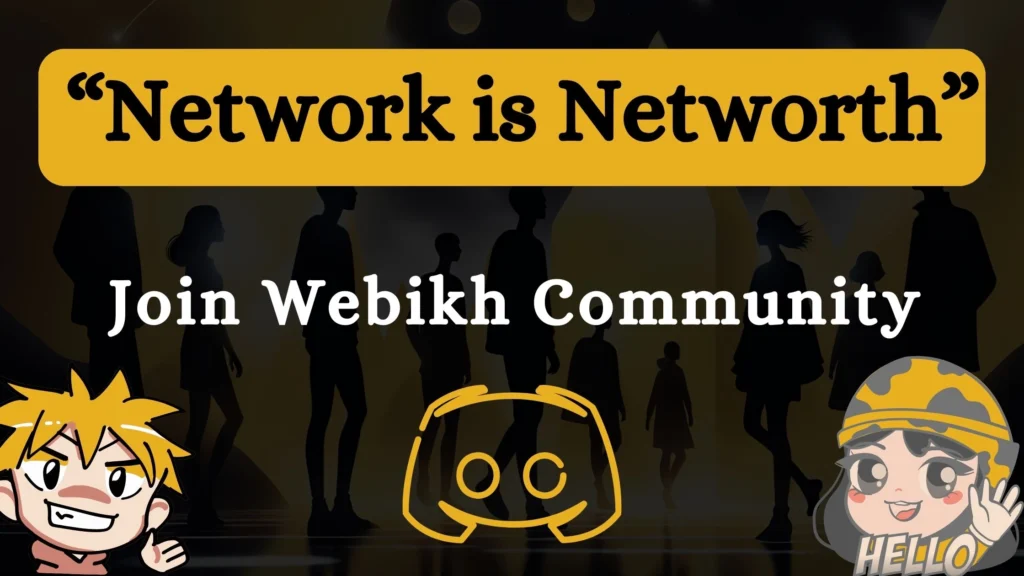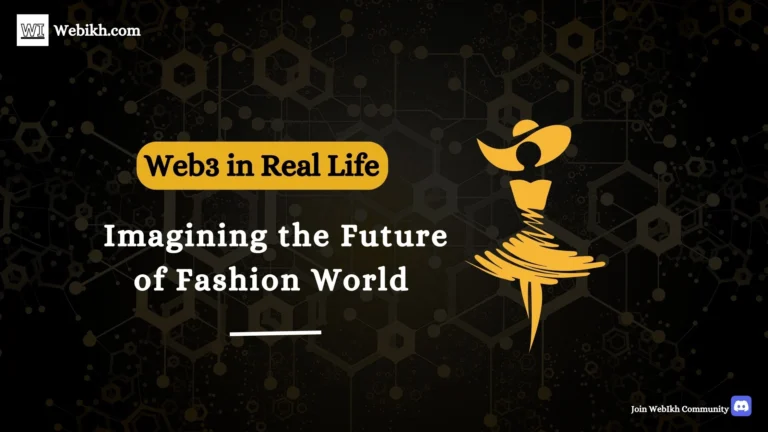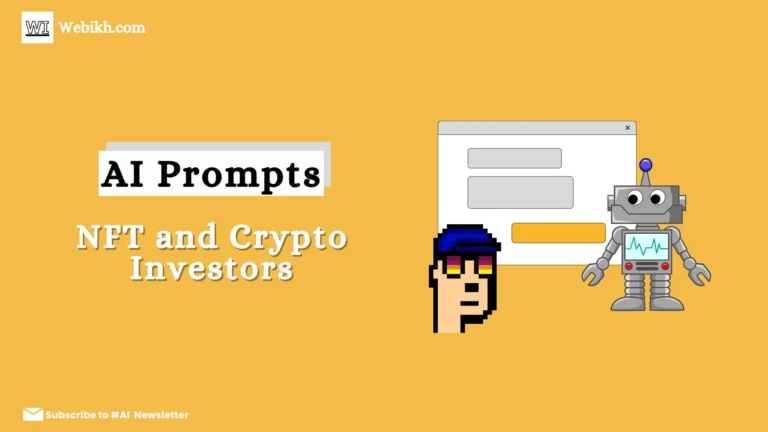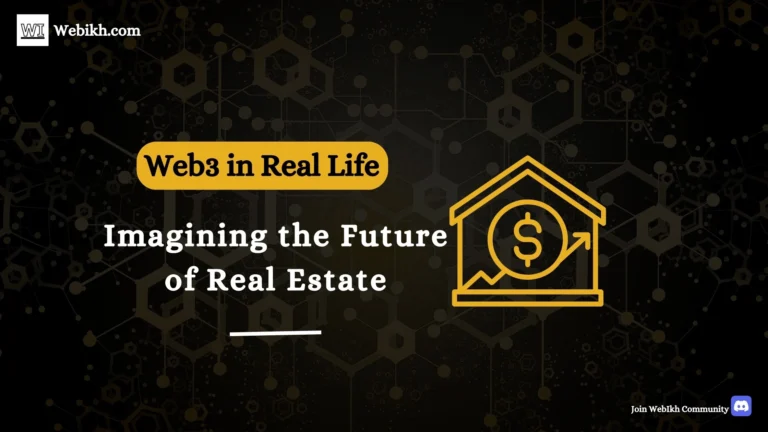What is Supply Chain’s future With Blockchain and AI in 2024?
What is future of supply chain in web3?
How does the future of Agriculture will look like with blockchain?
Can technologies like Metaverse, Artificial Intelligence, Cryptocurrency and NFTs can be used in product Supply sector?
You must be having these questions right?
Let’s dive deeper in the world of web3 and see what it offers for your Super fast deliveries ?
Let’s start with the problems the Supply Chain sector faces and how it can be tackled ?
Subscribe to Webikh Newsletter
The Only AI and Web3 Focused Newsletter
Subscribe & Download Freebies !
The Problem in Supply Chain
Imagine you’re in a store, trying to buy your favorite snack. But wait, there’s a problem! You notice that the expiry date on the snack has passed, and it doesn’t taste as good as it should.
Or worse, you find out it’s not safe to eat.
This is just one of the many problems in supply chains.
A supply chain is like a big puzzle that brings products from factories to your local store.
But sometimes, pieces of this puzzle go missing, or they take too long to arrive.
This causes all sorts of troubles:
- Delays: Products don’t reach stores or homes on time, and we have to wait longer for the things we want.
- Waste: Some products go bad or expire before they even get to us, and they have to be thrown away.
- Counterfeits: Sometimes, people make fake products that look like the real thing. These fake products can be dangerous.
- High Costs: All these problems make things more expensive. Companies spend lots of money fixing these issues, and those costs get passed on to us.
So, how can we make the supply chain work better for everyone?
The Solution – Blockchain’s Role
Blockchain comes to the rescue in the world of supply chain problems.
It’s like a super-smart digital ledger that records every step in a product’s journey. Here’s how it helps:
- Transparency: With blockchain, everyone involved in making and shipping products can see what’s happening. This means no secrets or hidden surprises.
- Security: Once information is added to the blockchain, it’s super hard to change or fake. This makes it tough for bad actors to sneak in fake products.
- Trust: When you see a product’s history on the blockchain, you can trust that it’s the real deal. You’ll know where it came from and how it got to you.
- Efficiency: Blockchain can help things move faster. It can automate tasks like paperwork, so products get to us quicker.
But how does it work exactly? Let’s dive into the details.
How It Will Work – Blockchain Unleashed
Blockchain works like a digital book where each page is a “block” that holds information.
These blocks are linked together in a chain, forming a timeline of events. Here’s how it plays out:
Recording Information: At each step of a product’s journey, details are recorded in a new block on the blockchain. This includes things like when it was made, where it’s been, and who’s handled it.
Smart Contracts: Blockchain can use smart contracts. These are like digital agreements that enforce the rules. For example, a product’s temperature must be kept cold during transport. If it gets too warm, the smart contract can trigger an alert.
Secure and Tamper-Proof: Once info is in a block, it’s locked down. No one can mess with it without everyone knowing. This keeps everything honest.
Sharing Information: All parties involved can access the blockchain, from the manufacturer to the truck driver to the store owner. Everyone is on the same page.
With blockchain in place, the supply chain becomes super reliable and transparent. But like any hero, it’s not without its challenges and dangers.
Risks and Challenges – The Villains Lurking
Blockchain isn’t a magical shield that makes all problems vanish. It has its own set of challenges:
- Complexity: Setting up and managing a blockchain system can be complicated and expensive.
- Adoption: Not everyone is using blockchain yet, so there can be gaps in the system.
- Privacy: Sharing all this data can raise privacy concerns. We need to make sure personal info stays safe.
- Education: People need to understand how blockchain works and why it’s a good thing. There’s a learning curve.
But despite these challenges, blockchain offers a way to make supply chains safer, faster, and more reliable.
It’s like a superhero swooping in to save the day and make sure our snacks are always fresh and delicious! 🦸♂️🌐📦
The Impact
Blockchain isn’t just any superhero; it’s a game-changer for supply chains. Here’s how it can have a massive impact:
Reduced Waste: Because we can track products better with blockchain, there’s less chance of things going bad before they reach us. This means fewer products are wasted.
Faster Deliveries: Blockchain can speed up the entire process. Products can get to us faster, so we don’t have to wait as long for that new gadget or delicious treat.
Safer Products: No more worries about buying a fake or dangerous product. Blockchain’s transparency and security keep us safe.
Lower Costs: When supply chains run smoothly, it’s cheaper for companies. These savings can sometimes be passed on to us, making products more affordable.
Eco-Friendly: Fewer delays and less waste are also good for the environment. It means fewer trucks on the road and less pollution.
Opportunities and Possibilities -What Lies Ahead
The future with blockchain in supply chains is full of exciting opportunities:
Global Trade Made Easier: Blockchain can simplify international trade by ensuring customs and regulations are followed. This can boost global commerce.
Better Tracking for Food Safety: We’ll know where our food comes from, reducing the risk of foodborne illnesses.
Fairer Supply Chains: Small farmers and producers can benefit from blockchain by proving the authenticity and quality of their products, leveling the playing field.
Sustainable Practices: Companies can use blockchain to show they’re using eco-friendly methods, appealing to environmentally conscious consumers.
New Jobs and Skills: As blockchain adoption grows, it creates opportunities for jobs related to its development and management.
MUST READ:
What is Charity’s future With Blockchain, AI and Metaverse?
What is Transportation’s future With Blockchain, AI and Crypto ?
What is Agriculture’s future With Blockchain, AI and Metaverse?
What is Retail’s future With Blockchain, AI and Metaverse?
Conclusion – A Brighter Future for Supply Chains
Blockchain isn’t just about digital coins. It’s a powerful tool that can reshape how products move from manufacturers to our homes.
With its transparency, security, and efficiency, it makes supply chains stronger and more reliable.
Of course, there are challenges to overcome, like the complexity of setting up blockchain systems and concerns about privacy.
But as technology evolves, these challenges can be addressed.

FAQ : AI & Blockchain for Supply Chain
An example of AI in supply chain is using predictive analytics to forecast demand, optimize inventory levels, and improve logistics planning.
How to use AI in logistics?
AI can be used in logistics for route optimization, demand forecasting, real-time tracking of shipments, and automating warehouse operations.
Which blockchain is best for supply chain?
Several blockchains like IBM Food Trust and VeChain are suitable for supply chain applications, offering transparency, traceability, and trust in the movement of goods.








Can you be more specific about the content of your article? After reading it, I still have some doubts. Hope you can help me.
Your article helped me a lot, is there any more related content? Thanks!